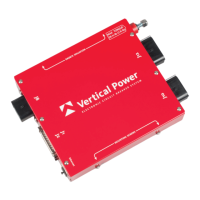Why do my Vertical Power Circuit breakers flaps go up, but not quite all the way?
- BbthompsonAug 1, 2025
If your Vertical Power Circuit breakers flaps don't go up all the way, there are a few potential reasons. First, try running the flaps using Momentary to ensure they operate correctly throughout their entire range. If limit switches are installed, they may need adjustment, or the linkage might require modification. Also, if the flaps are set to stop at intermediate positions, compensate for any slop in the position sensor. You can use the end point extent feature (under Flap Setup) to run the flaps a little extra and set the stop limits a bit shy of the ends. For instance, if your flaps are all the way up and the position indicator shows 4 (under flap setup), set the top limit at 10 and the end point extent value to 1.0 seconds.

